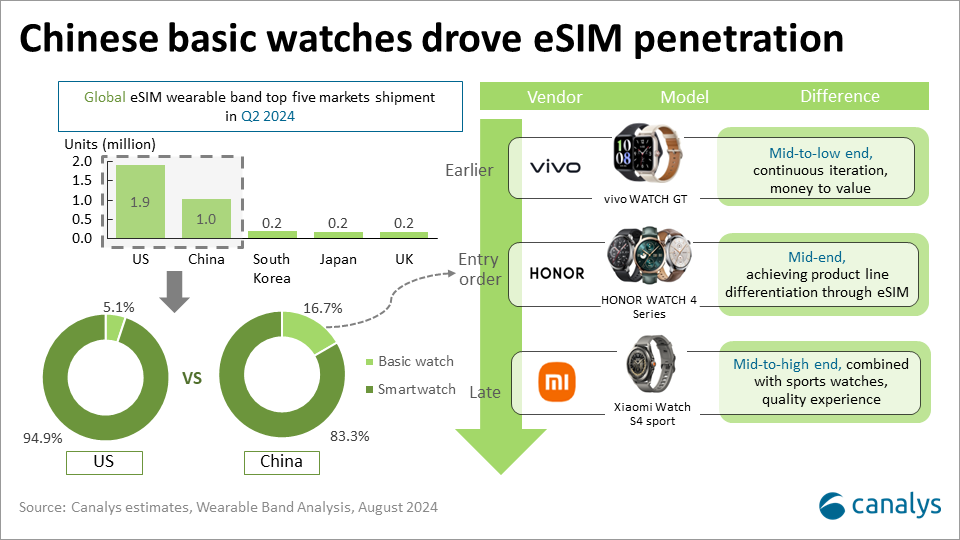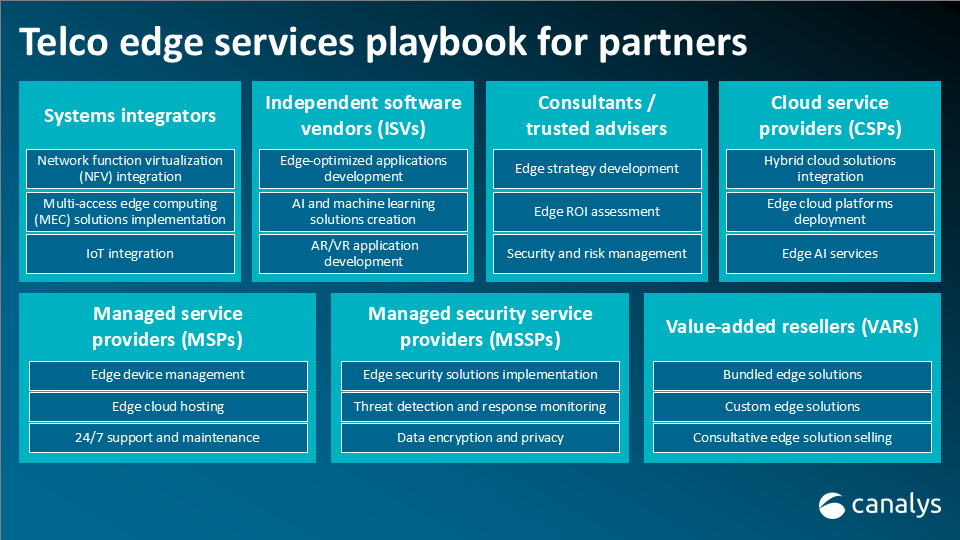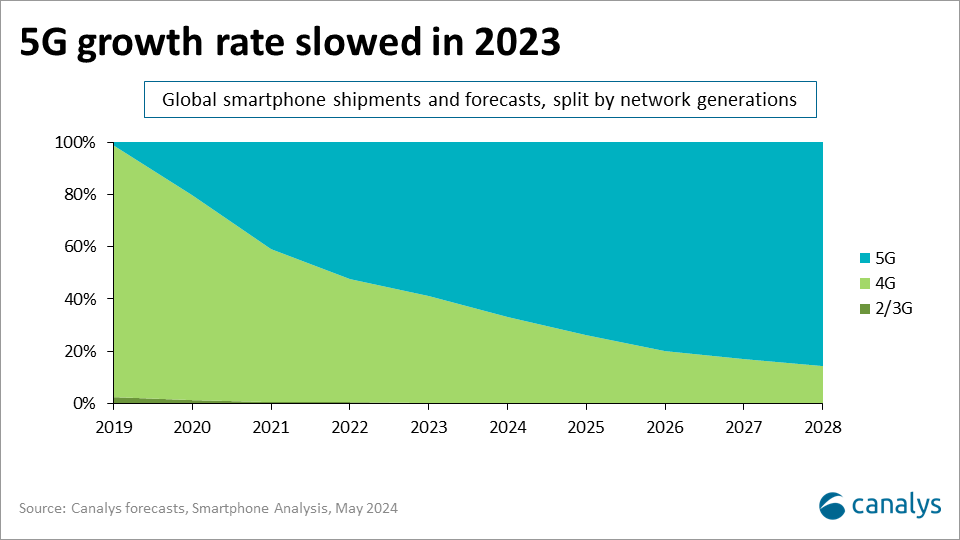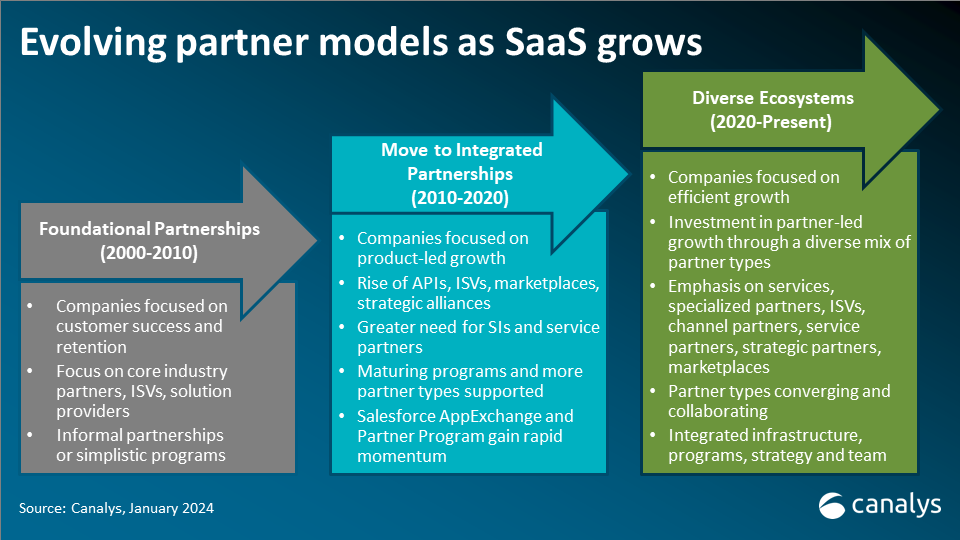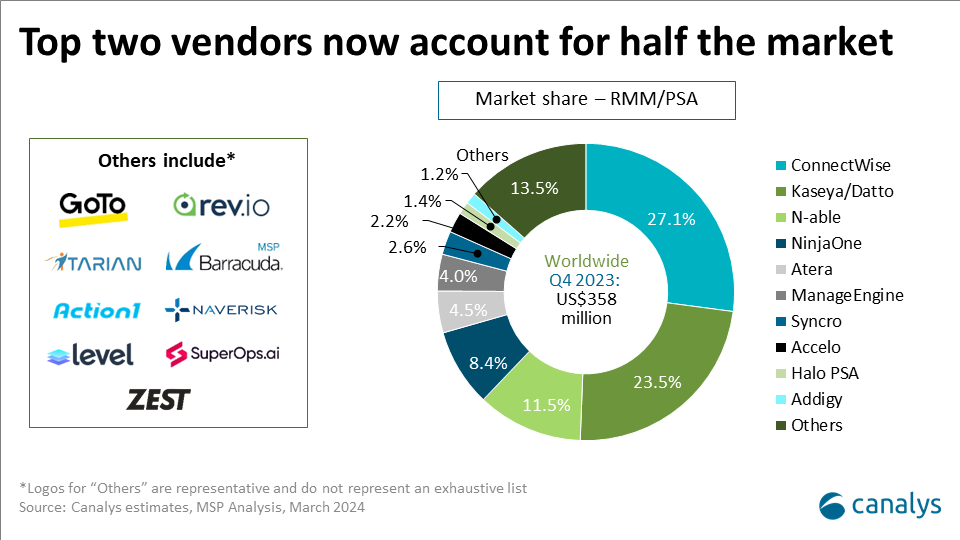Canalys is part of Informa PLC
This site is operated by a business or businesses owned by Informa PLC and all copyright resides with them. Informa PLC’s registered office is 5 Howick Place, London SW1P 1WG. Registered in England and Wales. Number 8860726.

Apple’s big play: new iPhones and ecosystem enhancements set the stage for future AI milestones
Apple’s latest hardware upgrades are paving the way for future AI advancements, which the company hopes will keep it at the forefront of technological innovation.
.png)
Apple revealed a range of new devices at its annual fall event, focusing on pushing the boundaries of AI, functionality and user experience. Here are my thoughts on the key takeaways:
iPhone 16 series – a hardware foundation for future Apple Intelligence opportunities
Apple’s iPhone 16 series marks a pivotal upgrade. Powered by the new A18 and A18 Pro chipsets, Apple is breaking from the tradition of reusing older chipsets in lower-end models. With 8GB of RAM, the iPhone 16 is built for Apple Intelligence – Apple’s AI-powered features – optimizing performance for demanding tasks that will require large language (LLM), visual (LVM), and action (LAM) model processing.
The new capture button on the camera is a key feature in the iPhone 16 series. It paves the way for deeper Apple Intelligence and new ways for new shortcuts and methods for users to interact with their iPhone. This presents Apple with an opportunity to improve the user experience across different applications, camera and generative search functionalities.
Another key feature is the text and voice conversational improvements to Siri, showcasing Apple’s focus on making Siri more personalized and intelligent. These developments are important next steps to build new GenAI applications that can improve the end-user experience while protecting data security and privacy.
The base model upgrades of the iPhone 16 satisfy the hardware requirements to bring Apple Intelligence to the wider audience of consumers, an audience who focus on everyday features and practical value without requiring operations such as advanced camera capabilities for content creation.
Apple’s product differentiation narrows – balancing performance and affordability, and capturing new opportunities
While narrowing the performance gap between the A18 and A18 Pro may reduce differentiation for the Pro lineup, the enhancements to the non-Pro models will increase the appeal in emerging markets. Offering more affordable, feature-rich devices gives Apple a strong competitive edge in regions including the Middle East, India, and Southeast Asia, which will help it attract the growing middle class of consumers. Growth in emerging markets will be key for Apple to help offset challenges in mature markets such as the US and Europe, where growth has plateaued. Improving the non-Pro models could be a key part of Apple’s strategy to upgrade users of Apple’s historically best 5G performing model – the iPhone 13, which, according to Canalys data, has shipped 129 million units throughout its lifetime.
In an effort to target the replacement cycle, Apple’s focus on trade-in promotions and affordability programs underscores the crucial role of its channel partners in making iPhones more accessible to users. These incentives lower the barrier to buy a newer model for consumers eager to experience this advanced AI functionality. However, in reality, the AI messaging might have a limited impact to drive demand on Apple consumers as the ‘halo effect’ of the brand remains unmatched.
Furthermore, Apple is closing the gap between its Pro models by introducing the 5x periscope telephoto lens in the standard Pro version – a feature previously exclusive to the iPhone 15 Pro Max. The improved camera functionality for image and video editing is vital to target GenZ influencers and content creators. The narrowing of hardware differentiation may provide Apple with a more streamlined platform to create software differentiation with Apple Intelligence.
The requirements for AI means the rollout of Apple Intelligence must be gradual. Localizing Apple Intelligence poses challenges due to varying legislation, language, and regional demands, making it far from a one-size-fits-all solution. As a result, delays in its global rollout may temporarily hinder Apple’s ability to capitalize on new opportunities, especially as competitors move quicker.
The high-stakes gamble – navigating regulatory hurdles and intensifying competition with Apple Intelligence in China
With the pressure from a challenging economic environment and intensified competition from domestic vendors, Apple urgently needs a catalyst to reignite demand in China. Right now, Apple Intelligence is the ace up its sleeve. However, the timeline for Apple Intelligence to be available in China remains uncertain and depends upon regulators. Apple’s public information on its in-house foundational benchmarks revealed a strong emphasis on privacy and minimizing the harmfulness of its models during both training and use case designs. This effort might help Apple navigate through the regulatory issues and finally bring their in-house on-device AI models into China. That said, the uncertainty around cloud-based aspects might present additional challenges. With Apple Intelligence currently unavailable in China, Apple’s recent move is to set consumer expectations that the devices they purchase this year will receive major software upgrades in the future. Currently, this is reflected in the iPhone 16 pre-order pages, which in the US states “built for Apple Intelligence,” while the Chinese site says, “ready for Apple Intelligence.”

Ecosystem enhancements – revolutionary health-tracking features target consumer stickiness
Apple’s event highlighted the tighter integration between AirPods and Apple Watch, focusing on hearing health. Pending FDA approval, this would mark the first time a mass-market tech device offers an all-in-one hearing health tracking experience, underscoring Apple’s push for a more cohesive ecosystem.
The Apple Watch Series 10 introduces a slimmer design, longer battery life, and faster charging. A new feature –sleep apnea detection – expands Apple’s focus on health monitoring. The larger display improves usability, making it an appealing choice for fitness enthusiasts who prefer a lighter alternative to the Ultra series. While no successor to the Apple Watch Ultra 2 was announced, the titanium variant of the Watch Series 10 is now Apple’s premium flagship, balancing style with performance.
AirPods 4 bring Active Noise Cancellation, delivering enhanced sound quality and a more personalized audio experience. This sets up a differentiation for consumers who are looking for ANC functionality without having to get the AirPods Pro.
These improvements to health tracking and accessibility are vital for not only elderly with hearing and health issues, but also to target GenZ who are increasingly conscious about mental and physical well-being.
Apple is strengthening its ecosystem by expanding cross-device health tracking and personalization, making each device more integral to the user experience. By deeply integrating AI into iOS, Apple aims to improve cross-device functionality and deliver a more seamless, personalized experience. This strategy not only enhances the overall value of its products and services but also encourages user loyalty by creating a more cohesive and unified ecosystem.
Attach rate of Apple products
|
Per 100 iPhones |
2021 |
2022 |
2023 |
H1 2024 |
|
AirPods |
38.1 |
35.4 |
31.5 |
31.2 |
|
Apple Watches |
17.1 |
17.8 |
15.5 |
15.8 |
|
iPads |
12.9 |
11.9 |
8.8 |
10.4 |
|
Smartphones |
100.0 |
100.0 |
100.0 |
100.0 |
Source: Canalys estimates, Smart Personal Audio Analysis, Wearable Band Analysis, Smartphone Analysis, PC and Tablet Analysis, September 2024
Final thoughts
While Apple made some impressive announcements, one notable shortcoming was the delayed rollout of full Apple Intelligence features. This decision might limit the immediate impact on sales, as many consumers may wait for software updates before upgrading their devices. However, Apple’s strategy to use AI-driven features as the primary selling point for iPhone upgrades makes its future events, such as WWDC, critical in delivering on its promise.
The “It’s Glowtime” event laid the hardware foundation, but the true differentiation will come with the introduction of more advanced software and AI integrations in upcoming events, solidifying Apple’s dominance in both AI and the broader tech ecosystem.
